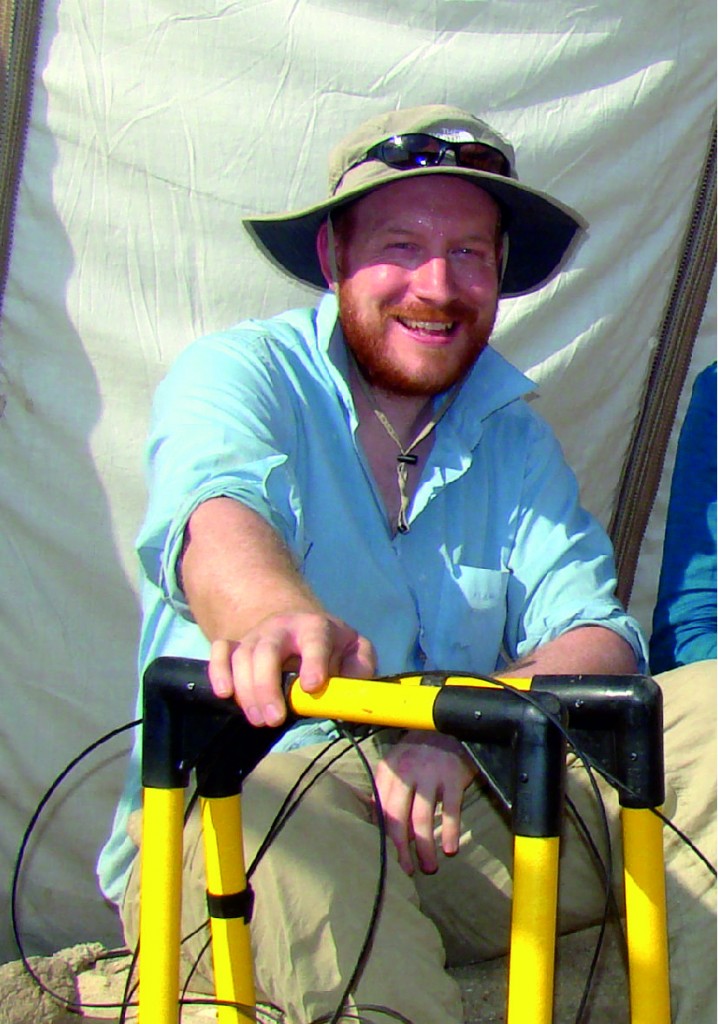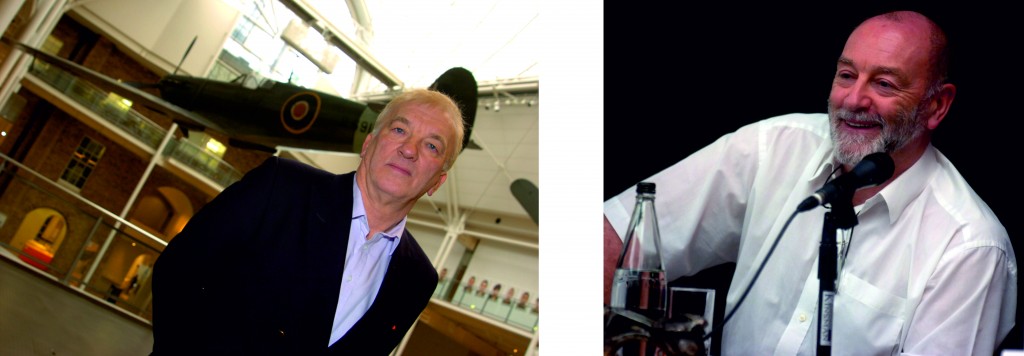Buried beneath the soils of Burma lies a mystery that has been almost 70 years in the making: were a shipment of Spitfire aircraft concealed beneath a British airbase at the end of the Second World War? Dr Adam Booth, a geophysicist at Imperial College London and regular GeoLog contributor, is part of an archaeological team who are trying to unearth the truth in this tale. He’ll be posting to GeoLog from the field. This is Part 1 of the series; read his other posts here.
19 December 2012
Hi, and thanks very much for your interest in this project! Over the next month or so, I’ll be sending back a series of field blogs from our archaeological survey in Burma. It’s quite a unique story and I hope you’ll enjoy the insight into archaeological geophysics! We’re heading out to Burma in January 2013 so, in this first EGU blog post, I’ll introduce the survey team – and do my best to explain quite a strange archaeological tale!
I’m Dr Adam Booth, a near-surface geophysicist at Imperial College London. I use a variety of geophysical methods to image subsurface features in environments ranging from Arctic glaciers to the Arabian desert. My involvement in this project started in 2004, when I met Mr David Cundall while between projects at the University of Leeds.
Me! Dr Adam Booth, during some archaeological fieldwork in Egypt.
David Cundall is as unique an individual as his story itself! A farmer from Scunthorpe, UK, he is also a keen aviation enthusiast. Sixteen years ago, he met a former American airman who mentioned that a number of Spitfire aircraft – an iconic British fighter plane – were buried at an airbase in Burma, at the end of the Second World War. Never assembled, never even removed from their delivery crates, they were simply buried when the British abandoned the base in 1945 – or so the veteran’s story went. Incredibly, David managed to track down eye-witnesses who claimed to have performed the burial. On trips to Burma with David, they independently identified the same spot at the airbase where the alleged burial took place. However, the abandoned base wasn’t exactly abandoned anymore: it had become Mingaladon Airport, the main passenger airport outside the Burmese city of Rangoon.
To persuade the Burmese government to investigate at such a sensitive site, David realised he’d need harder evidence than some eye-witness accounts. Geophysics was one such means of doing this – it wouldn’t confirm the burial of aircraft but it could at least reveal if there was anything ‘suspicious’ in the subsurface. David therefore approached geophysicists at the University of Leeds, specifically seeking out Dr Roger Clark (who was to become my PhD supervisor, and colleague thereafter).
Left – David Cundall, and a Spitfire aircraft at London’s Imperial War Museum. Right – Dr Roger Clark (both photos: Simon Turnbull, University of Leeds).
Roger advised David on performing his own geophysical surveys, but it soon became apparent that some specialist geophysical knowledge would be required on-site. With his full teaching schedule and me with time to kill, Roger suggested that David approach me about performing the survey.
I remember David’s phone call, when he asked me to travel to Burma with him. Somewhat surprised at the suggestion, I thought he’d said Birmingham, and I only realised I was wrong when he started talking about flights…! Six months later, I was stood in a swamp at the side of the airport’s runway, dodging a monsoon and the odd snake, using geophysics to measure the electrical conductivity of the subsurface – essentially, ‘metal detecting’ on an industrial scale. I’ll go into more detail in a future post, but the results were very encouraging! Directly where the eye-witnesses had located the burial, the geophysical data showed highly-elevated electrical conductivities, strongly suggestive of buried metal in the ground.
But is buried metal the same as buried Spitfires? Maybe not, but the evidence was certainly sufficient to convince the Burmese to permit an excavation. Earlier this year, with the financial backing of software company Wargaming, David signed a recovery contract with the newly democratised Burmese government.
The current phase of the project is led by three experienced specialists in the field of conflict archaeology – namely, Martin Brown, Andy Brockman, and Rod Scott. Theirs is one of the fastest growing branches of archaeological science. Using archaeological techniques, conflict archaeologists interpret the material traces of communities preparing for or involved in conflict. Their experience at this site is vital: Mingaladon was heavily bombed during the war, hence excavating there requires care and expertise. Unexploded ordnance is a risk, and we must also be sensitive to the possibility of human remains. Furthermore, whatever is uncovered may be very fragile and recovering it will be a delicate operation.
Our three conflict archaeologists. Left – Martin Brown. Centre – Andy Brockman (photo: Simon Turnbull, University of Leeds). Right – Rod Scott.
According to Andy, the burial of never-assembled Spitfires is “unprecedented” – can we even be sure that the eye-witnesses knew what was in the crates they were burying? Combined with an absence of records from the normally comprehensive military archives, it’s safe to say that the archaeologists are rather sceptical about the possibility of Spitfires at the site! However, they agree that the geophysical data suggest something is there, and it will be a fascinating archaeological find whatever it is!
If there are Spitfire aircraft there, David Cundall is convinced that we’ll see 30 original World War Two planes fly again. However, there’s only one way to find out – the dig starts on January 5th, and Roger and I will be performing new surveys to guide it. Watch this space for updates!
By Adam Booth, Imperial College London




Ronnie Danielsson
Nice with some updates
Roy Matthews
A great and worthy adventure. I bet there are many people who would love to participate. A regular blog or twitter update of the project would be very popular. Please keep updating us.
Cassio Pagliarini
Most interesting history for old airplane entusiasts. Wish the team good luck and will follow the blog with antecipation.
Tim Brown
Hi Dr Booth. Thank you for blogging the progress on the Spitfire recovery operation. The aviation world will be watching with exitement. I hope we can get video or photos of the lid coming off the first crate that comes out and see inside ! Good luck.
Terry Ansell
Fascinating story and it’s great to see a combination of enthusiasm and professional scepticism after all the journalistic hype. Let’s hope that it is all true – I shall follow this one with real interest. (maybe Cundall did say ‘ Birmingham and there is a hidden cache of Spitfires under the Bullring – that’s the way rumours start!)